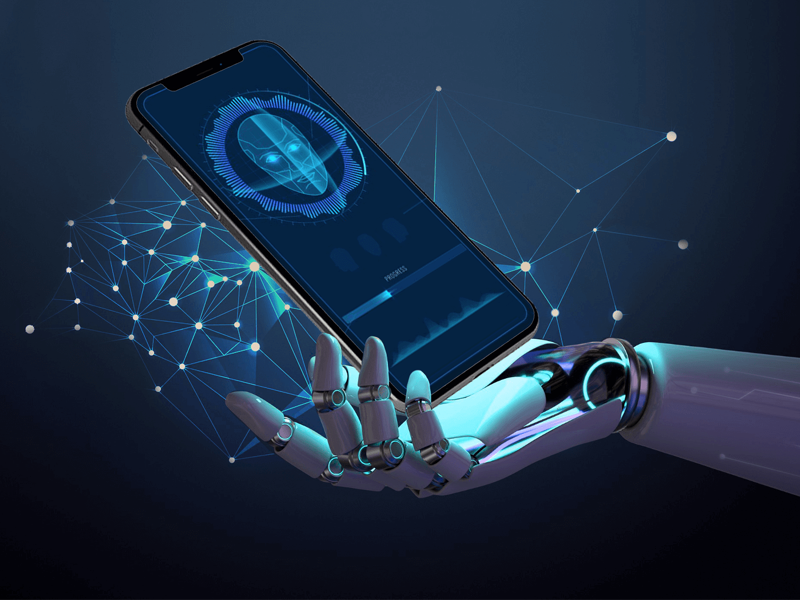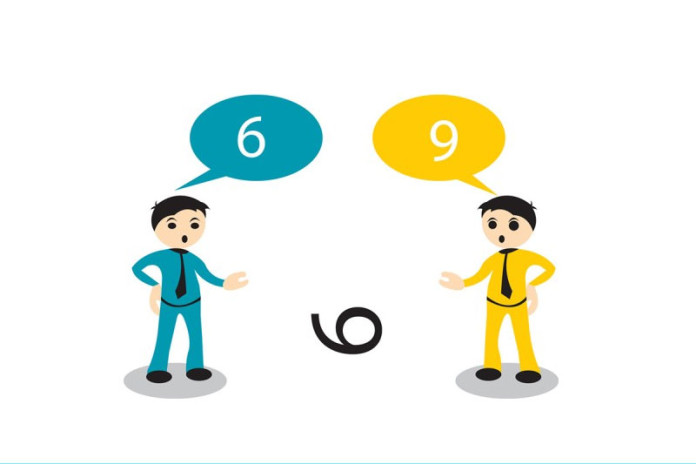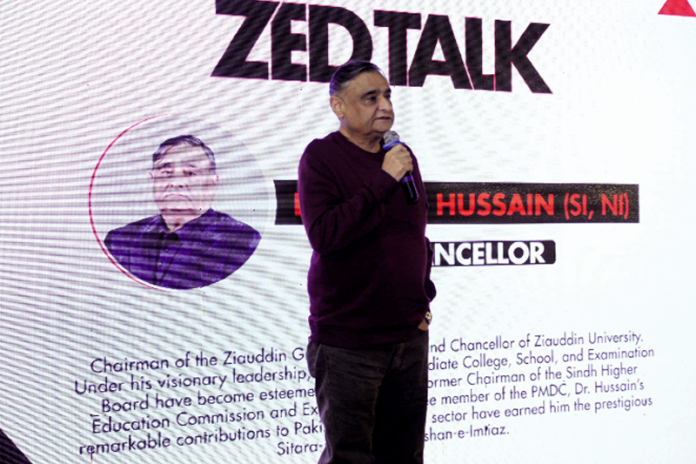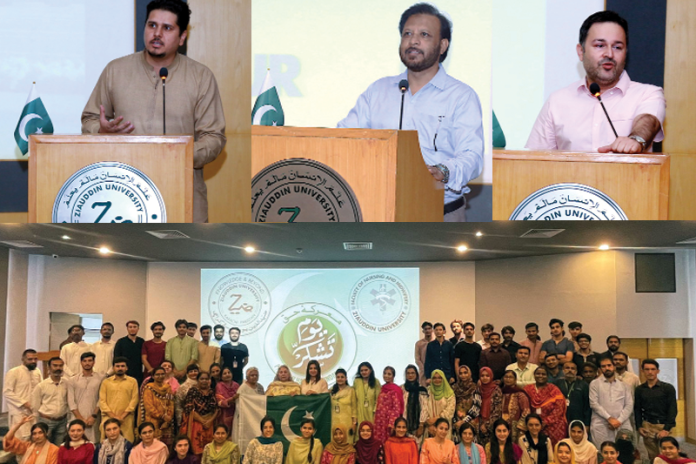Beyond Intelligence: A Tech Lead’s Frontline View of AI’s Advancement
As AI grows more capable and intellect one Tech Lead explains why.

- 73
- 0
Artificial Intelligence has advanced from lab curiosity to boardroom necessity. But as companies race to integrate AI into their operations the people quietly directing these transformations often remain unseen.
Muhammad Faizan Khan, a seasoned Tech Lead at a US based Software Company sits down with us to discuss the evolving boundaries of AI, the psychological implications of machine learning and why ethics must scale with code.
Q: Faizan being the industry expert, what’s the biggest shift you’ve witnessed in how we build and think about AI?
A: AI was about precision. Could it classify an image? Could it understand a phrase? Today the conversation has shifted to context and cognition. We’re no longer just training models to respond, we're training them to reason to adapt. It’s like watching a tool grow a nervous system.
This marks a fundamental shift. AI is evolving from reactive tools to systems that simulate aspects of human thought. It is as if a tool is growing a nervous system, developing memory, inference and the ability to adjust in real time based on complex input.
This progression raises new stakes. Reasoning without awareness removes the functional judgment. As AI approaches the modeling of cognition, we need to reckon with how to take what begins as cognitive ability but then merges with the values and concerns of humans about our oversight and trust.
Q: That sounds powerful but also potentially unpredictable. Are AI systems becoming too autonomous too fast?
A: It's less about speed, more about calibration. When autonomy outpaces accountability you have a recipe for dysfunction. What we're seeing now is a push to embed explainability into AI systems.
Explainability is understanding why the model made a decision of X and not Y rather than simply accepting the outcome. This is especially critical in high-risk domains such as healthcare, finance, and law, where decisions can carry significant consequences. Building confidence in AI requires not only delivering accurate results but also transparency.
Interpretability is now a central challenge. Techniques like attention visualization and counterfactual reasoning are emerging to make model logic more accessible. But it is also a design problem. We need systems that are transparent by default, not just performant.
Q: You mentioned cognition. How close are we to Artificial General Intelligence (AGI)?
A: We’re still a few conceptual leaps away. Today’s AI excels at narrow tasks. A chess bot can't make your coffee. AGI requires a kind of common sense reasoning that frankly we don't yet know how to engineer. However, we are getting closer with research going on into multi-modal models that integrate vision language, audio, etc.
However, transitioning from narrow AI to AGI means more than scale. It will require advances in machine learning, knowledge representation and decision-making capability. Until we reach that point, we should remain aware of what systems can do today while also understanding how we design, deploy and make sense of their emerging capabilities.
Q: What's your expert opinion on the psychological impact of interacting with AI (i.e., chatbots and voice assistants)?
A: It's significant and a little bit untapped. We are beginning to see people projecting affective expectations onto machines, with the expectation of empathy and understanding and that is a cognitive illusion. This is not just about deception, the real danger is psychological dependence. We need to build AI responsibly, with guardrails in terms of privacy but also in terms of psychology.
Responsible AI development must address this risk. Privacy and fairness are important, but psychological safety is also important. We need to draw clear design boundaries that will reduce the chances of over-identification with AI and help indicate to users what AI is and what it is not.
Q: Can you share an example from the industry that shows where AI is heading in the realm of Quality Assurance?
A: One of the best examples is what Google's DeepMind did with AlphaCode. While AlphaCode is not a conventional QA tool, it represents a significant breakthrough: AI systems are now able to write code, debug code and even optimize code at a level that can rival human capability. This generative intelligence presents an entirely new method for quality assurance.
Instead of only executing the planned test cases and human-led debugging, they are now working towards autonomous systems that can write their own tests, identify weaknesses and continually improve entirely based on real-world usages and previous failures. The future of QA is not only about identifying bugs but it is about predicting them. Using past bug data and citing repetitive code patterns, AI-driven tools could soon predict where failures might occur without you ever deploying code.
Consider a self-testing framework, powered by machine learning and evolving with the codebase. Imagine a framework that does not only identify past failures but could help identify potential optimizations, point out sections of code that do not follow expected patterns, or even identify potential ethical/moral/secure situations. This is not a discussion about science fiction, it is a distinct direction into which quality assurance can become an intelligent, autonomous process.
Q: How is Software Quality Assurance evolving with AI?
A: The role of SQA is shifting from verification to validation. It’s no longer about just checking boxes. Now it's about anticipating how systems behave under real-world pressure, how they interact with users and how responsibly they handle data. We’re embedding AI into our QA processes to predict failure paths before they manifest.
More importantly, as AI increasingly becomes part of the products themselves, QA is now required to evaluate not just correctness but behavior: transparency, fairness and ethical risk. QA is evolving from evaluation to oversight and foresight, rather than confirming that a complicated system is operating according to its intended technical aspects, QA is now equally required to consider alignment with human aspects.
Q: Ethical AI has become a buzzword. Is the industry doing enough?
A: Buzzwords don’t enforce accountability. We need frameworks audits transparency mandates stakeholder alignment. Ethics isn’t a patch you install at the end. It’s the architecture. Regulation is currently behind the curve and that’s dangerous.
Maya Lin, an AI policy analyst at TechGov Labs, concurs. "Too many companies treat ethical AI as a checkbox. If there are no formal guidelines or audits, we're betting on hope rather than a structure."
Meanwhile, Priya Desai, an AI researcher at MIT adds to the discussion of cross functional oversight. "Ethics needs to be co-owned by developers, designers and legal teams. It's less about what the system does but why and how it was allowed to do it."
And as Jason Wu, Head of AI Ethics at a Fortune 500 company points out, "We need standards that can be enforced, rather than begged for. Voluntary principles only matter so much when the profit incentive is to have none."
So it seems that these voices inform one conclusion best, which is that the chatter around ethical AI is amplifying but until there's coherence amongst regulation, corporate architecture and technical development, our progress toward meaningful change will remain uneven.
While the architecture of artificial intelligence spans wide across industries and imaginations, voices like Faizan's remind us that code, no matter how advanced, reflects the hand that writes it. The future of AI is not only the intelligence of machines but of intelligent humans. Intelligent decisions lead to better results in the future.

















































